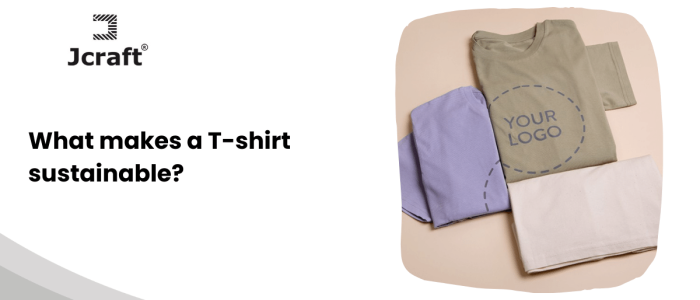What makes a T-shirt sustainable?

Over the last several years, there has been a growth in the field of sustainable fashion, and it can also increase awareness of people about the social and environmental impacts. The movement toward eco-friendly fashion is evidenced by the green t-shirts made from ethical production practices and sources. The objective of this exploration is to provide an understanding of sustainability in t-shirts so that consumers can make conscious decisions consistent with their values.
Defining Sustainable T-Shirts
The sustainable t-shirts focus on using eco-friendly materials, production methods that are good for the environment, and fair labor practices. They have symbolized a period wherein there has been a transition cycle from "dress to impress" to "ethically aware" culture where the environmental and social impact of fashion has been consciously taken into consideration.
The question remains: what does sustainability mean for the t-shirts we are debating?
Manufacturing Process
Five key points explain the manufacturing process of sustainable t-shirts
• Material Selection: The quality of the materials should be the best and they should be suitable enough to make t-shirts and of good quality. The fabric's width can also come wider such as cotton and blend fabrics.
• Design and Style: Establish what styles (such as crew neck and V-neck) and design developments (e.g., graphics, logos, and necessary elements that will be fashionable as per what the customers would like to see) would be dependent on the customers’ needs and market tendencies.
• Sizing and Fit: Ensure you have the sizing chart which is also stocked with the clothes of sizes that are included in the sheet. The safety of all the customers should be a priority, therefore, clothes of all sizes are supposed to be bought.
• Quality Control: Do not forget to set up both the control measures and analytical tools in such a way that it allows the manager to monitor the end quality and make the necessary changes in time.
• Printing and Embellishments: Both thinking of short-term fashion trends and selecting environmentally friendly long-lasting printing methods (e.g. screen printing, digital printing) that are of good quality must be a priority.
Why choose a hemp T-shirt?
Choosing a hemp t-shirt is not only a sustainable, durable, and comfortable choice, but it is also a unique and distinct statement. Hemp farming demands less water and fertile soil than conventional cotton, so it can be considered environmentally friendly. Hemp fibers are famous for their long-term life as well as their outstanding strength, which facilitates no regrets when washing clothes regularly. The fabric is breathable, keeps moisture away, and provides protection from UV radiation; therefore, it makes your experience comfortable even when the condition is not okay.
Durability and longevity
One of the unsustainability factors in t-shirts is not only the material and mode of production but also the durability and length of time they spend in use. Sustainable brands invest in high-quality construction methods, and they go for timeless designs that enable the t-shirts to be durable and fail to wear out after some time.
Minimal Environmental Impact
Along with sustainability, reducing a t-shirt's environmental footprint in the full cycle of the product is another issue. Included in this is the use of eco-friendly dyeing and printing methods, reducing water consumption, and adopting recycling channels. Using this cradle-to-grave approach, sustainable brands make waste and pollution reduction a priority at every stage of their product's life cycle.
Conclusion
Thus, the sustainability of t-shirts, a multifaceted term, involves appropriate raw material selection, responsible manufacturing, the durability of t-shirts, and their social responsibility. Through knowing about these factors, consumers will be able to make good decisions that will support brands like Jcrafteco that match their values.
